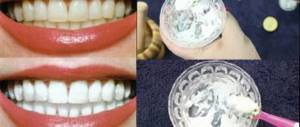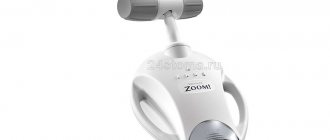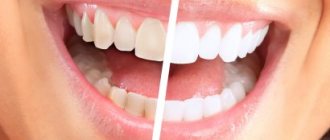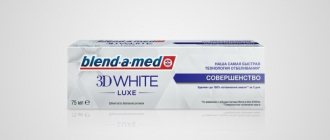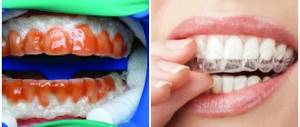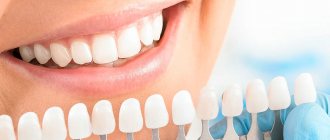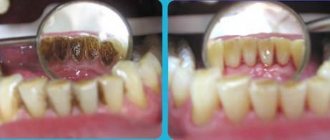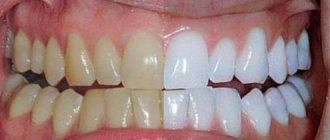A snow-white Hollywood smile is a powerful weapon and an important element of one’s image, but it is unlikely to be achieved naturally. Even if you regularly adhere to good oral hygiene, a number of factors lead to dulling of tooth enamel. As a result, you have to turn to professional centers to restore your teeth to their former shine.
The list of proposed procedures includes chemical teeth whitening. In general, this service is not particularly popular among patients, but it has its advantages, which should be examined in more detail.
Causes of darkening of enamel
The main factors that influence the shade of teeth:
- regular consumption of coffee, strong black tea, foods with dyes;
- bad habits, especially smoking;
- metabolic disorders in the body, systemic diseases;
- long-term use of certain groups of medications (in particular, drugs with tetracycline, etc.);
- reaction to a filling;
- natural age-related changes;
- depulpation (nerve removal).
Contraindications
Even if the patient has figured out what is the most effective and best method of teeth whitening, it is necessary to make sure that there are no restrictions. The procedure is contraindicated in:
- gestation and lactation period;
- the patient’s minor age, primary occlusion;
- individual intolerance to the components of whitening products;
- presence of orthodontic structures;
- oncological processes and undergoing a course of chemotherapy;
- damage to hard and soft tissues due to traumatic or other impacts;
- installed artificial prostheses;
- chronic pathologies of teeth and gums in the acute stage, acute dental diseases.
Each case is considered by the dentist individually. If you whiten your teeth if there are absolute restrictions, this can lead to serious complications.
What are the types and techniques of teeth whitening in dentistry?
All procedures are performed only by a doctor in a clinic using special equipment. Not all methods allow you to get a snow-white smile in one session. Often the procedures are carried out in several successive stages. Safety is the key point, so first of all, patients tend to try more gentle techniques, gradually moving on to serious manipulations.
Mechanical whitening method
First of all, the procedure is aimed at removing plaque, food particles, and dyes. The dentist uses special instruments that quickly and safely remove deposits. The most popular methods remain ultrasonic cleaning and Air Flow. In the second case, a special sandblasting machine is used, which delivers a solution of water, air and fine abrasives under pressure. As a result, the enamel is polished and becomes 5-7 tones lighter.
Laser whitening
The principle of operation of this method is to simultaneously expose the teeth to a solution based on hydrogen peroxide and a laser beam. The device promotes better penetration of the composition into hard tissues.
How the procedure goes:
- the doctor examines the oral cavity and informs the patient about the presence or absence of contraindications;
- plaque and tartar are removed;
- A gel-like substance is applied to the teeth;
- the laser beam acts on each element of the row for half a minute;
- the patient’s oral cavity is cleaned of plaque particles and other debris;
- fluoridation is performed to protect the enamel from harmful effects.
Why is laser teeth whitening effective?
Tangible advantages of the procedure over other methods:
- absence of pain and other discomfort;
- short period of exposure to the laser device;
- the laser disinfects, which means it is an excellent means of preventing oral diseases;
- enamel is lightened up to 10 tones in just one visit to the dental office;
- almost completely harmless to tissues;
- saturation with mineral components at the final stage helps strengthen the enamel layer and prevent increased sensitivity;
- If you complete several procedures in a course, the surface of the teeth will become perfectly smooth, thereby minimizing the risk of further staining by food.
Flaws
The disadvantages include:
- sick cost (comparable to other methods);
- observation of increased tooth sensitivity;
- If medical recommendations are not followed during the recovery period, the enamel will darken very quickly.
Contraindications for laser whitening
The dentist will refuse the procedure if the patient has:
- deep damage to teeth (caries, cracks, chips, erosion);
- orthodontic structures in the mouth (braces, plates, etc.);
- inflammatory processes in soft tissues;
- exposed root part.
It is also not recommended to carry out the procedure during pregnancy, breastfeeding and when the patient is a minor (except when parents give their written consent).
Photobleaching
This is a method in which a special gel-like composition is applied to the teeth, and then the surfaces are illuminated with an ultraviolet lamp. Currently, this type of whitening is considered one of the most modern and effective.
Technologies
Popular options:
- Zoom. Calcium phosphate is added to the mixture for application to teeth, which helps strengthen the enamel. Experts use a UV lamp.
- Amazing White. Hydrogen peroxide molecules break down into water and oxygen. As a result, not only the enamel, but also the dentin layer is lightened.
- Beyond Polus. A halogen lamp and LED are used. A safe procedure with a gentle effect on teeth and an effect of up to a year.
- Luma Cool. LED light bulbs emit a cool light. The process consists of 3 stages of 8 minutes each. With proper care and compliance with medical recommendations, the result can last up to 2 years.
Indications
This type of teeth whitening technique is indicated for:
- the presence of spots on the tooth surfaces (fluorosis);
- staining the enamel yellowish due to taking certain medications;
- age-related changes in the body;
- preparation for prosthetics and installation of veneers.
Contraindications
In what cases should you not resort to the procedure:
- minor age;
- childbearing and lactation period;
- deep carious lesions;
- allergy to the components of the bleaching composition;
- increased tooth sensitivity due to thinning enamel.
Advantages of the method
The tangible advantages of this method of restoring the whiteness of a smile:
- no pain or other discomfort;
- effectiveness (quick whitening effect that lasts 1-3 years);
- safety compared to most alternative procedures;
- session duration is about 15 minutes;
- lightening by 10-12 tones.
Negative sides
Minuses:
- high price;
- increased sensitivity of enamel immediately after dental procedures;
- lack of a pronounced effect in certain treated areas in the presence of prostheses and filling material;
- further remineralization may be required;
- often hard-to-reach areas remain unclarified;
- high risk of burns and injury to mucous membranes if the technological process is not followed.
Chemical bleaching
Doctors apply highly concentrated preparations that contain hydrogen peroxide or other active ingredients to the teeth. As a result, dentin is whitened, its shade becomes lighter by 5-7 tones or more.
In this case, no devices (laser, UV lamp, etc.) are used. The enamel can be lightened at home, but it is much better if the chemicals are applied by a professional.
Indications for chemical teeth whitening
The procedure is indicated for:
- the presence of bad habits that lead to yellowness of hard tissues;
- changes in the shade of enamel due to eating foods containing bright, aggressive dyes;
- long-term use of drugs with tetracycline and other drugs with a similar effect;
- age-related changes in the patient’s body;
- traumatic impact, which led to the destruction of the enamel layer.
Contraindications to the procedure
This type of bleaching is contraindicated if the patient has:
- serious damage to the enamel;
- dental diseases that are not fully treated;
- increased sensitivity to temperature changes, sour, sweet, etc.;
- intolerance to the components included in the gel used to restore a snow-white smile.
Stages of the procedure
Procedure:
- initial examination by a dentist to identify possible contraindications and obtain permission to whiten teeth;
- isolation of soft tissues using special pads that prevent the gel-like product from getting on the gums and mucous membranes;
- directly applying the drug to the surface of the teeth using a brush specially designed for this purpose;
- thoroughly removing any remaining gel in the mouth.
Positive properties of the chemical method
What are the advantages:
- high efficiency in a short period of time, maximum results are visible after half an hour to an hour;
- the effect lasts up to 5 years (if you follow all the rules and do not skip hygiene procedures);
- comparative harmlessness, since apart from the chemical substance the teeth are not affected by any devices;
- no pain.
Disadvantages of the method
Negative sides:
- increased sensitivity of dental units immediately after the procedure;
- high price;
- increased risk of soft tissue burns if the medicinal composition is dosed incorrectly or is taken in too high a concentration of the active substance;
- good results cannot be achieved in one visit to the dentist;
- selectivity (not all hard-to-reach areas will become snow-white).
Endobleaching (intracanal method)
The aesthetic appeal of the dentition is restored by introducing a special substance into the cavity of a tooth that has undergone depulpation, which restores its natural whiteness. This method is used mainly in cases where other methods are useless.
Indications
As mentioned above, this type of bleaching is used in emergency situations if no effective options can be found. Doctors recommend resorting to the procedure when:
- Injury to dental units, which is accompanied by bleeding in the pulp cavities. When blood clots form, the color of the tooth changes.
- Complications of dental diseases (pulpitis, caries), if the nerve dies, and pulp removal is also performed. Endobleaching is performed for preventive purposes to prevent darkening of the enamel.
- Using filling materials with pigments that color the roots and then the entire tooth.
- Detection of cracks in the enamel through which dyes penetrate. They change the color of their teeth with regular consumption of coffee, strong tea, and brightly pigmented foods.
Contraindications
The procedure is contraindicated in the following cases:
- pregnancy and lactation period;
- age up to 18 years, milk bite;
- increased sensitivity of enamel;
- history of periodontitis;
- deep cracks and other serious damage to the enamel layer;
- pathological abrasion of teeth;
- the presence of fillings made of photopolymers;
- endocrine disorders, diabetes mellitus;
- caries in advanced stages;
- inflammation of soft tissues in the oral cavity;
- individual intolerance to the components of the whitening composition.
Advantages of the method
Pros:
- absence of pain;
- the procedure takes about half an hour;
- the aesthetic appeal of teeth is restored without installing veneers and dentures;
- minimal risk of adverse reactions;
- lightening by more than 10 tones;
- affordable price.
Disadvantages of endobleaching
Negative sides:
- there is no complete guarantee that as a result the teeth will become snow-white;
- in rare cases, the fragility of hard tissues may increase;
- short-term effect, a repeat procedure will be required in a maximum of 2 years.
Stages of endobleaching
The teeth being treated must be depulped with preliminary removal of the nerves. If a filling has been installed, it is carefully removed, then a comprehensive cleansing of the oral cavity is carried out. Procedure for the dentist:
- antiseptic treatment;
- selection of a substance suitable for the natural shade of enamel;
- isolation of the coronal part;
- removal of old filling material;
- rehabilitation;
- insulation of channels using special linings;
- filling cavities with bleaching agent;
- installation of a temporary filling for 1-2 weeks.
After the specified period, you must visit the clinic again. The doctor will evaluate whether the desired effect was achieved. If all is well, the tooth is filled.
Where to contact?
The price for chemical teeth whitening varies significantly depending on the class of the clinic. The right decision is to choose the middle segment, where prices are not particularly high, and the staff is experienced and qualified. The result is visible almost immediately. Your teeth will become 5-10 shades lighter. And the dream of a Hollywood smile will become a reality.
To prevent re-staining, it is recommended to limit your consumption of food products that have dyes, and also stop smoking (including hookahs).
Which whitening to choose at home?
There are many whitening products available on the modern market that allow you to carry out the procedure without leaving your home. They differ in price category, effectiveness, safety, possible risks and other characteristics. These are various pastes, plates, mouth guards, as well as compositions prepared independently from improvised means.
It is difficult to say which method will be most effective. However, even the most expensive pharmaceutical preparations for home use will not show the same effect as dental intervention in a clinic.
Having considered what types of professional teeth whitening in dentistry exist, you can choose a technique that is right for you. We invite you to sign up for a preliminary consultation with a Dentiki dentist by calling the number listed on the website or filling out the feedback form.
Preparation and carrying out the procedure
Chemical teeth whitening has a number of contraindications, so the dentist initially diagnoses the patient’s oral cavity.
Any restorations in the bleaching area (veneers, fillings, crowns) do not allow such a bleaching process.
In addition, if the teeth in the area of whitening require treatment, then restoration of the health of the teeth is carried out first, and then only whitening.
Before applying the gel, the soft tissues of the tooth are fixed, and the gums are protected with a special film. After which the prepared composition is applied for 15-30 minutes. The concentration is determined individually.
It is extremely important that the process is led by an experienced cosmetologist, since if the gel is used incorrectly, there is a risk of damage to the oral mucosa and other problems.
